EAT IN ASIA / Destinations / Philippines
Taste of Japan in Sushi Yum, Manila - katsudon, tuna sushi and California maki and a bowl of a seaweed miso soup
Tags: PHILIPPINES TRIP


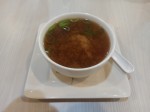
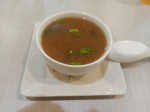
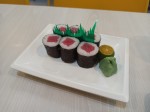
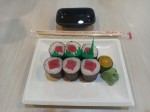

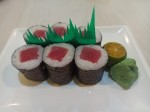
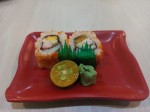
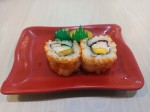
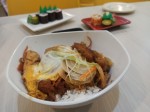
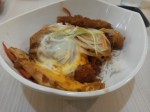
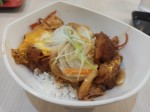

What would you say for a good Japanese style food? Wouldn’t it be nice to have a break in the traditional cuisine of the Philippines and enjoy some dishes from Japan? Maybe some sushi? (Here you can check how does a Japanese Sushi look like) Or maybe a serving of a delicious seaweed miso soup? Or would you prefer some meat dishes like pork katsudon?
I do not know what about you, but I am definitively for it! So, let’s try and find a worth trying Japanese restaurant in Manila, in the Philippines.
Although Manila is full of different restaurants, the majority of them is either offering traditional dishes from the Philippines or these from China. Of course, it is not surprising, but it also means that you might need a little bit more time if you would like to find a place serving other cuisines. Happily, not only European-style restaurants are existing. I would even say that Asian-style restaurants are still dominating, so just after the long Chinese restaurants’ list, there are many Korean, Thai and Japanese locals. But, which of them shall you visit?
Manila’s Chinatown in Binondo
Of course, depending on what exactly you are looking for, you should adjust your choices. However, if you would like to have a relatively light, healthy and delicious meal, you should at least once visit Sushi Yum.
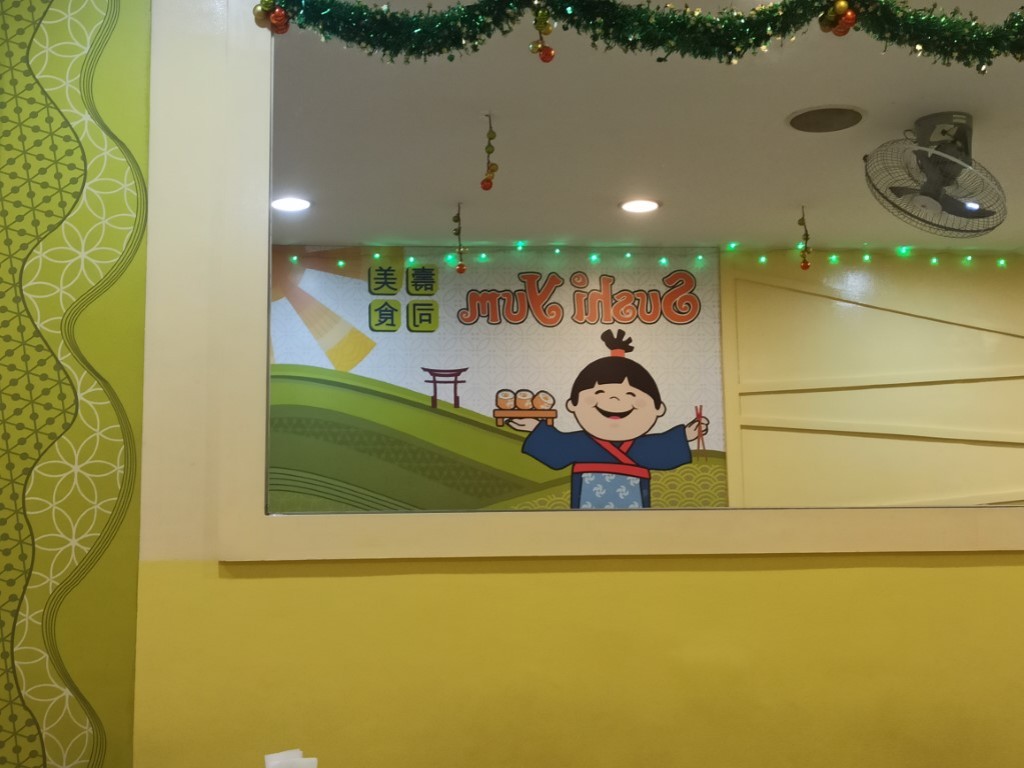
This restaurant is located in the Manila’s Chinatown, Binondo. It is close to the well-known Ongpin street, so you will be able to experience some Chinese culture there too. Apart from that, in the same area are located some famous Chinese brands as for example Eng Bee Tin that has its flagship store in the nearby (You can read more about this place in the post Eng Bee Tin - Home of the Best Hopia, Tikoy & Mooncakes in Ongpin, Binondo (Chinatown) Manila).
But, if you were tired with this overload of all Chinese store, shops, restaurants, bars etc., you could always head to some western restaurants, fast foods, and coffee stores. In Manila’s Chinatown you have plenty of places like that! McDonald’s, Burger King, KFC, Starbucks or Pizza Hut - all of them are there too! So, almost every big brand that you know from for example France, Germany, Australia, the United States of America, Italy, Australia or Mexico, will have its local too.
Japanese restaurant and sushi bar – Sushi Yum - Menu
This small restaurant does not attract a lot for the first glance. It is neither very crowdy nor the entrance is spectacular. Just a regular bar. One of many eateries with no splendor. But nothing more deceptive.
One might say, Sushi Yam is a very common and simple restaurant in the context of the interior and exterior design. However, on the other hand, it is a place where a great food can be eaten. A place where the staff is helpful, quick and very polite.
Apart from that, all dishes are nicely served, garnished and quickly prepared. The menu list is also wide. In the Sushi Yum’s dining list you will find, except for sushi, sashimi and maki many other Japanese style dishes. Worth mentioning are Premium Aburi Rolls, Special donburi, Teriyaki or Misono dishes and of course, all sorts of Tempuras.
Finally, if you prefer to go with something that includes noodles, you will be able to select dishes with udon or soba noodles too. Of course, any Japanese restaurant cannot exist with no Ramen dishes so, also in Sushi Yum a couple of Ramen versions is available.
Finally, the menu includes rice dishes and soups. However, if you are not extremely hungry, you can always pick something from the snack list or from side dishes.
Then, if you are coming with your friends, you can always choose one of Sushi Yum Platters.
Sushi Yum – Sushi menu list
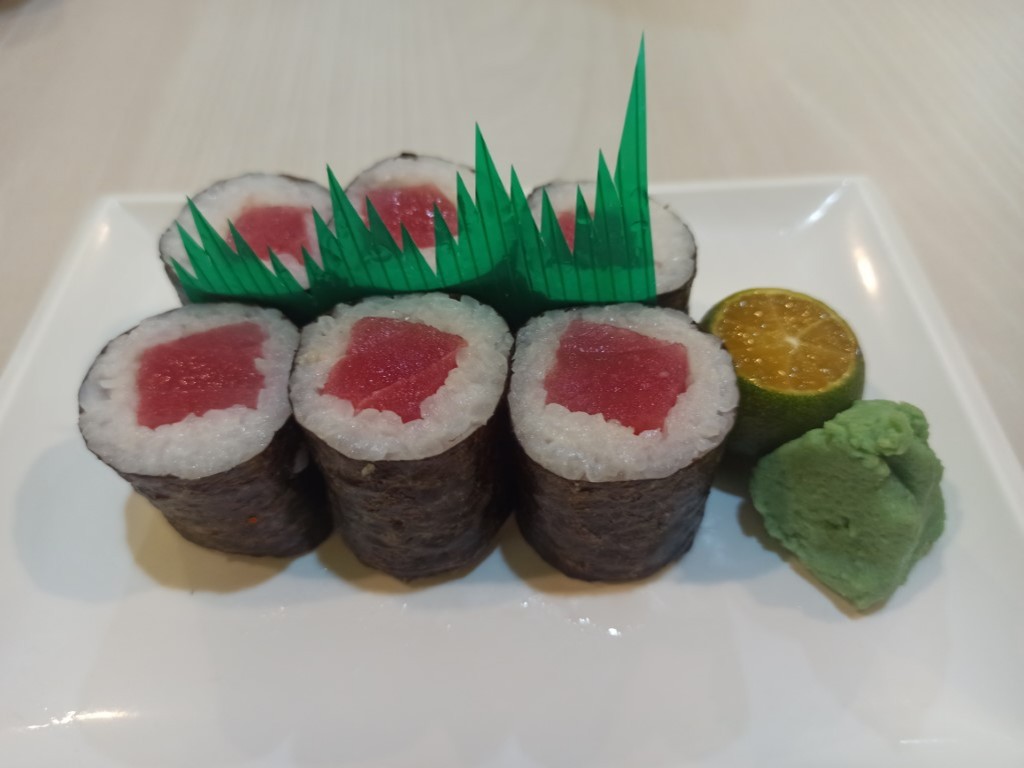
This list consist of all traditional and classic compositions of rice, seaweeds and extra toppings. As in most places, Sushi Yum offers sushi with crabsticks (Kani sushi), tuna, salmon and eel (Unagi sushi). Apart from that, you will of course, get a Tamago sushi with an egg. Then, there are vegan options like an Inari sushi with a bean-curd skin (this sushi can be mixed with crabsticks too, if you do not mind it). Finally, if you would like to try many different sushi types, you can always choose a mixed sushi set.
Sushi Yum – Makimono menu list

Staying with the sushi list, Sushi Yum serves a couple of sushi maki options. California maki, futo maki and tempura maki are just these basic positions. Add to that Thunder rolls, fried cheesy rolls and a special Sushi Yum roll.
The simplest maki includes only one ingredient like crabsticks (Kani maki) or an egg (Tamago maki). Then there are California maki with crabsticks and mango. Finally, are maki with a composition of more than two ingredients including salmon, tuna, crabsticks and tamago egg.
However, if you are looking for something special, I would recommend selecting one of these special rolls. So, either this Sushi Yum Roll, or Thunder Roll or a nicely fried cheesy roll. For me, if I had to decide which roll to choose, I would definitively take a Thunder Roll that is with a raw salmon, tuna and crabsticks.
Of course, if you love tempuras, then you cannot skip tempura maki with fried prawns.
Sushi Yum – Sashimi menu list
The Sashimi menu list is not very long, but includes most common toppings like an egg, crabsticks, tuna and salmon. Another option would be to take Sashimi Combo being a combination of tuna and salmon sashimi, or to choose mixed sashimi giving the widest taste palette.
Sushi Yum – Sushi Yum Platter menu list
These Sushi Yum Platters are my favorite! I love them. Depending on how hungry you are and with how many friends you come, choose a platter with sixteen to forty pieces. The basic platter includes only 16 pieces. (California maki, and tamago and crabstick sushi) The second one would be this Special Platter with three pieces more. Although the difference in the number of them is not big, the variety of them is wider. Apart from the tamago and crabstick sushi, there is also Unagi sushi with eel and two kinds of sashimi – tuna and salmon.
If you are completely for maki and would like to skip all other sushi types, choose mixed maki platter with a combination of five different maki types. This five points list includes traditional California maki with crabsticks and mango, big maki, crabstick maki, tamago maki and so loved tempura maki. All in all, thirty-two pieces of five maki types!
Finally, there are two platters with about thirty pieces – Mixed Sushi Platter and Mixed Premium Aburi Platter. While the first one includes crabstick, tuna, tamago, salmon and Kani Inari sushi (crabstick with bean-curd skin) the second platter is much more interesting.
Mixed Premium Aburi Platter consists of thirty wonderfully aromatic aburi sushi rolls. These flamed grilled rolls are delicious. At the same time, you can taste the original fish aroma and these unique grilled notes.
Sushi Yum – Premium Aburi Rolls menu list
This section includes flamed grilled rolls with such ingredients as salmon, eel and… what might be surprising, beef! Gyu Aburi Roll is a composition of a classic sushi roll with a meat topping.
Although not so popular in regular sushi bars in western countries, beef in Japanese cuisine is relatively common. Mainly it is served either as a BBQ or as a cutlet. However, as you can see, it can be part of a sushi menu list too.
In Sushi Yum you will get one of the best versions of the Gyu Aburi Roll. Here, beef is served grilled with flame. Thanks to that, it gets a beautiful, slightly dark color and has a characteristic smoky aroma. As the process of flame grilling is relatively short, only outer layers of the meat are slightly dried and the inner part is juicy and has a nice fibrous consistence.
Sushi Yum – Ramen menu list
This section is for all followers of the Ramen culture. Although it is not my favorite dish from the Japanese cuisine, I know that a lot of you love it! Of course, I cannot say that ramen is not tasty, but still, it is not my top choice.
However, it is always a good option to forget your standard choices and routines and do something else. And that is what I am sometimes doing too. A classic composition of wheat noodles in a broth served with some toppings still gives many options. If you are looking for a seafood version, select Umino Sashi Ramen. Otherwise, choose either a chicken ramen (Tori Ramen) or a minced pork with beansprouts ramen (Miso Ramen) or a Gyuniku Ramen that is a beef version. Apart from that, a nice option is a Gyoza Shitake Ramen that is ramen served with Japanese style dumplings with a mushroom filling (Check also our other post on Japanese gyozas).
Sushi Yum – Soba menu list
These noodles are one of my favorites. Thin, buckwheat Japanese noodles are usually eaten with some sauce after they are being chilled. Another wasy of serving them is in a hot soup. Actually, that is something I like less.
But here, in sushi Yum, soba dishes are delicious. The most traditional soba noodles are served with vegetable fritters (Kakiage Soba), prawns in a classic tempura (Tempura Soba) or with beef (Niku Soba). As long as you like buckwheat noodles, you will like all of them.
Sushi Yum – Udon menu list
Then come a selection of thick, wheat noodles – udon. This type of noodles is on my list of top noodle types just after the buckwheat soba. Udon noodles have a unique, delicate texture, have a nice structure, and served even with basic toppings taste greatly. What is also very nice for me, is the slightly chewy texture of udon, and this almost white color. Although it is often served in a soup-like dish, almost all other serving types are allowed too. It means that no one would be surprised by a stir-fried udon or an udon curry.
Sushi Yum – Soup menu list
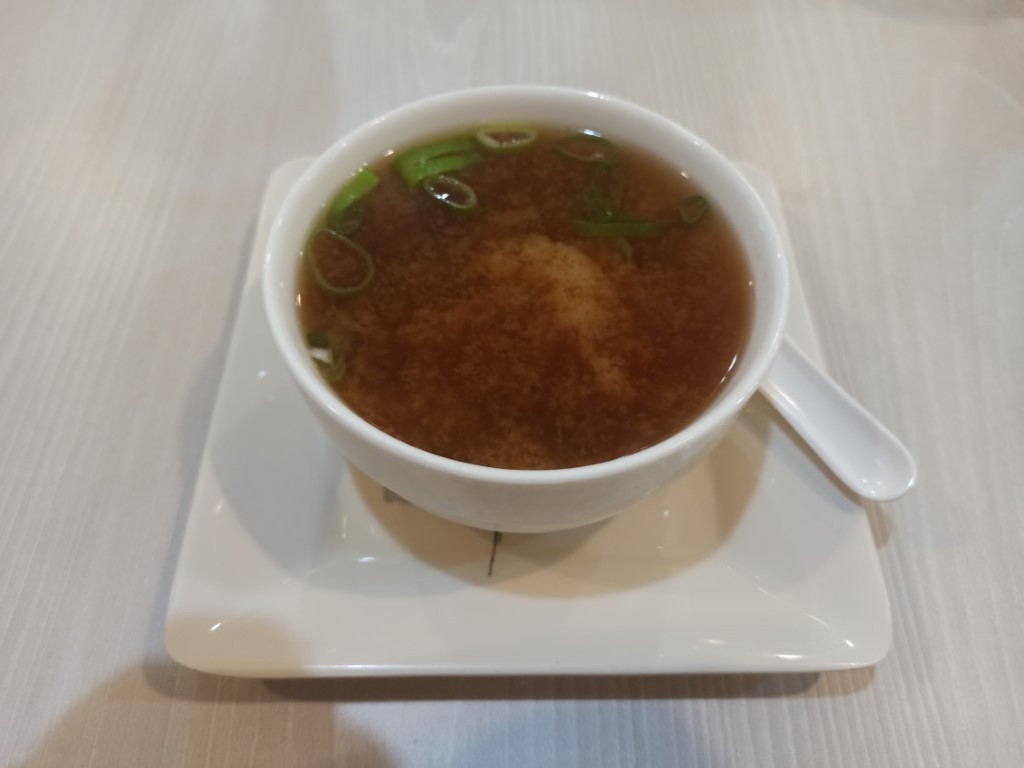
Are you looking for a slightly lighter meal? Why not to choose some soups? If you prefer meatless options, take Tamago soup that is with an egg and vegetables. Or, my favorite one – Miso soup that includes delicious seaweeds and tofu cubes. Of course, if you cannot have a meal without meat, Sushi Yum has in its menu Yasai Soup that is not only with vegetables but also with minced pork meat. Finally, a very nice option is to take a Gyoza Shitake Soup that has this characteristic mushroom flavor.
Sushi Yum – Special Donburi menu list
Now comes a list of Japanese dishes in which the main ingredient is plain rice. Donburi is a bowl of rice served with some toppings. The list of these toppings may range from vegetables, through an egg and meat and finally ending on fish and seafood ingredients. The most popular donburi includes beef meat, an egg, prawns in tempura and eel.
This is reflected in the Sushi Yum menu list too. Gyudon Donburi is served with beef and egg. Then, staying with beef, you can choose Gyunikudon that is prepared additional with some onion and ginger. But, although usually I choose seafood, this time, I would recommend you skipping Tendon Donburi, that is with prawns, and select Unagi Don. This last position is delicious! Nicely grilled eel with plain rice allows you to distinguish all aromas of the fish, its softness, tender meat texture and this slight grilling note that ideally blends with the oily aftertaste of the eel.
If you prefer chicken or pork meat, then some traditional Japanese dons are of course too. Choose one of chicken donburi like Torikatsudon or Oyakudon or go with Katsudon. The first one is a breaded chicken cutlet on rice topped with egg, while in the second, both chicken and egg are simmered together. If you select Katsudon, then you will get a pork cutlet on rice. All of them are really good and worth trying, especially that these bowls are huge and full of meat.
Finally, there is also a milkfish don and a wonderful Mabo Tofu. The last one is extremely worth trying. Although Mabo Tofu don originates from the Sichuan province in China, it is very popular in Japan too. It is one of these spicy dishes that is good for vegans and vegetarians too. What is more, in the Sushi Yum restaurant this dish can be served either less spicy, or on a regular spiciness level.
Sushi Yum – Teriyaki or Misono menu list
Beef, seafood or fish in an aromatic sauce served with some salad is a good option for all of you that want to concentrate on the aroma and texture of the main protein ingredient and skip noodles or rice (that can always be ordered additionally as a side dish).
Choose one of staple sauces like this sweet Japanese one – Teriyaki or the Garlic Steak sauce called Misono. Then pair it either with beef, or with squid, or finally with tuna or salmon. You will definitively like this subtle taste of the meat or fish that is nicely underlined by your selected sauce.
Sushi Yum – Tempura menu list
Yes, now it is time for a Tempura menu. I know, you were waiting for it impatiently. Apart from this basic option – Kakiage Tempura, meaning vegetable fritters, you can always select prawn Ebi Tempura, crabsticks Kani Tempura or a fish one. However, if you cannot decide which one would be the best for you, just go with a proposed by Sushi Yum Tempura mix that will allow you to try a couple of different Tempura types.
Sushi Yum – dishes with rice menu list

Japanese cuisine has its own versions of the fried rice dish. When traveling across southeast Asian countries, you will probably find many variations of the fried rice. Although this dish is so popular, every each country has it is own way of preparing it. Different spices, different ingredients and even a slightly different way of frying it. And even though Japan is not famous for its fried rice dishes, they still do like it. Their versions of the Chahan rice or fried with garlic and meat - Yakimeshi, are the most popular options. Curry Chahan and Tomato Chahan are nothing else than Chaofans known from the Chinese cuisine.
Sushi Yum – Snacks menu list
And as said before, if you do not have a very big hunger, then you can always try Sushi Yum’s traditional Japanese snacks. Although the selection of them is not very wide, they are still worth trying and tasting some Japanese street food staples. The snacks’ menu list has only three options but all are very classic and are giving some idea on how a Japanese street cuisine looks like. The selection includes Takoyaki, Kani Karokke and two types of Okonomiyaki. Learn how to make Japanese pizza Okonomiyaki using this recipe. The first of them – Takoyaki, are cooked, or better to say, fried on a special pan. Takoyaki are small balls prepared of a wheat flour dough that is finally stuffed with a filling consisting of minced octopus’ meat, green onion, some ginger and some shredded tempura. Tokayaki originate from Osaka, Japan, however, their popularity and availability allowed them to spread across the whole country and even further.
Then there are Okonomiyaki that are Japanese pancakes. However, these pancakes are traditionally savory and grilled with as many and as different ingredients as you like. This concept reflects their name – Okonomiyaki, that, more or less, means – grilled as you like it. Basically, Okonomiyaki are prepared from a wheat flour, eggs and water, and then grilled with such ingredients like cabbage, meat or seafood and onions. Of course, this list might be wider, but these ingredients are the most popular and traditional ones. Finally, Okonomiyaki is topped with some special Japanese sauces, mayonnaise and/or tomato sauce and with pickled ginger. In the Sushi Yum restaurant, you can get either a traditional Japanese seafood Okonomiyaki or a more western-style option like Okonomiyaki with ham and cheese. So, decide which of them better fits your taste.
As the last position on the snacks’ list is a set of three Creamy Kani Korokke. These snacks are very soft and smooth Crab Cream Croquettes that are almost melting in the mouth.
Dough ingredients include salted butter, onions, crab meat, ketchup or a tomato sauce, wheat flour and milk. Apart from this basic list, aromatic spices like nutmeg and black pepper cannot be missed. Finally, a must is grated cheese that gives that creamy texture.
At the far end, oval-shaped crab croquettes are breaded or, if you wish to call it, coated in a special flour, water and egg mix combined at the end with plain flour and with some panko breadcrumbs.
As all these coating components shall be used step by step, the whole process is slightly time consuming, however, worth the effort. The first step includes rolling croquettes in the plain flour. The second – in the egg, water, and flour batter and the third step would be to generously roll them in panko breadcrumbs.
Thanks to the whole process, Creamy Kani Korokke are delicious. The outer part of these crab croquettes is extremely crunchy, while the inner one is soft and creamy.
Sushi Yum – Side orders menu list
And if all these dishes did not satiate your hunger, then you can always have some Japanese style side orders. Choose from different vegetable options like Yasai Itame – stir-fried veggies or Moyashi Itame – stir-fried beansprouts. Or take a high protein soya-based fried tofu – Age Dashi, or Mabo tofu that can be served either spicy or regular. Apart from that, you can also go with another fried tofu option - Tofu Steak in a mushroom sauce.
If you would like to add some more seafood to your meal, Sushi Yum has some positions in its side dishes' menu too. For example, you could select a crabstick Kani salad, spicy squids and a grilled eel.
Finally, if you are really missing a regular, animal-based meat, you can always add to your lunch a chicken cutlet - Torikatsu Curry or a pork cutlet - Tonkatsu Curry.
TOP menu set in Sushi Yum Japanese restaurant, Binondo, Manila

The menu looked great to us. It was so difficult to decide what to choose. So many good things and so many tempting dishes! The selection was not easy. We decided that the best option would be to go to this Japanese restaurant multiple times and every time to try something else. Of course, we did not try all of dishes from the whole menu list, but we did try many of them.
And finally, if we had to recommend you the perfect lunch menu set it will definitively include a soup, some starters, one sushi set and a regular rice or noodle-based main course.
The best Japanese soup in the Sushi Yum restaurant
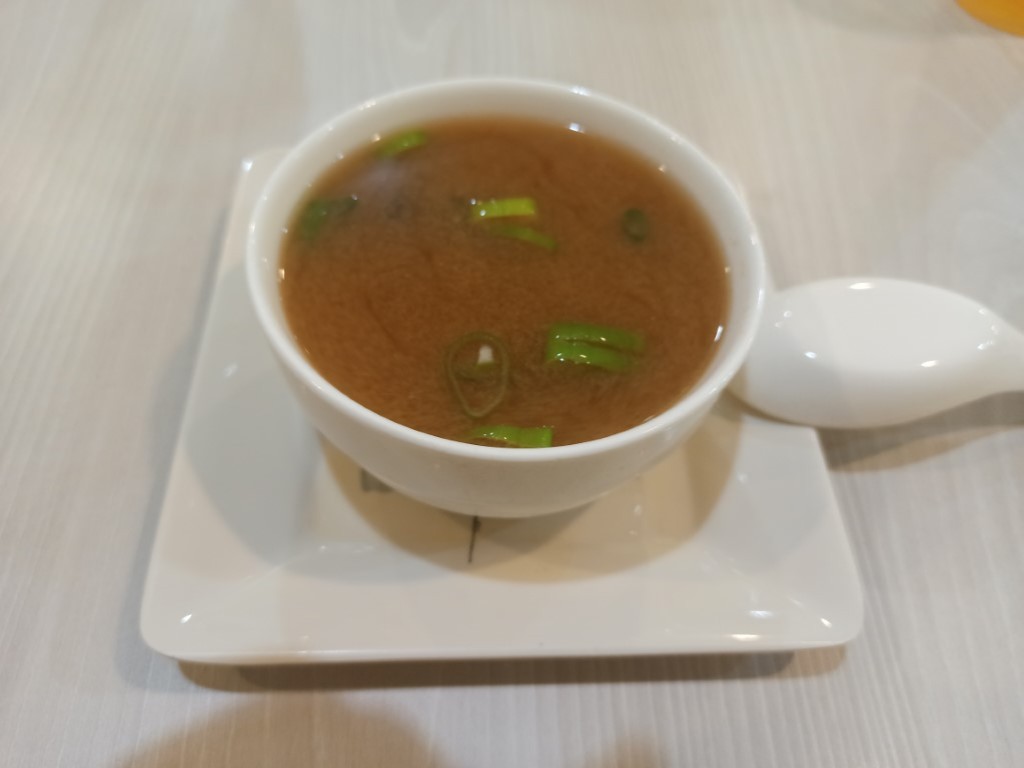
Starting with the soup, for me the best one was this traditional Japanese Miso soup with seaweeds and soft, tofu cubes. Slightly salty, with some nice wakame seaweeds notes and including this unique umami taste.
The best sushi set in the Sushi Yum restaurant
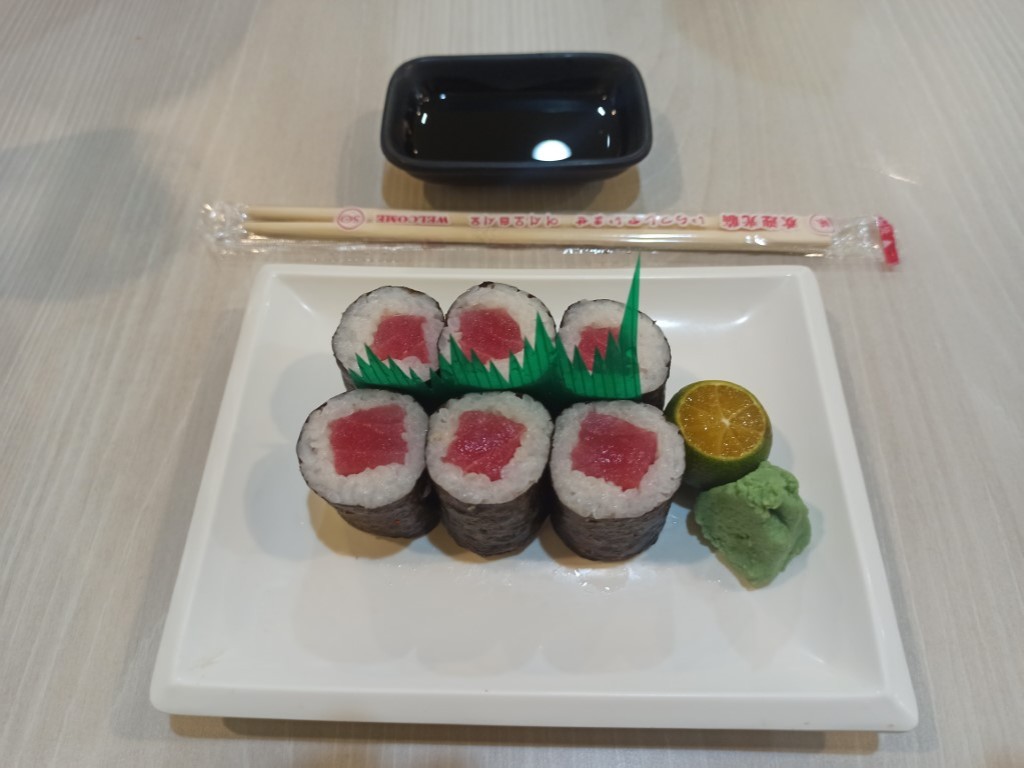
Then, for a small hunger or just as a starter, we would recommend having a freshly prepared sushi set. Our favorite one is a classic tuna sushi. Big tuna slices put on top of a sushi rice roll wrapped in a nori seaweed sheet.
I love raw fish and seafood dishes. That is when you can really enjoy this characteristic meat texture. Slightly chewy but at the same time delicate and giving a nice feeling in your mouth.
Actually, all raw fish and seafood types that are served in sushi sets are good. No matter whether they are fatty or are rather low in fat. As long as they are fresh, they are good for me. And even if you prefer these varieties of fish that are almost fatless, salmon is a great option too. Remember, that the oil that is contained in fish is a healthy one and you do not have to get rid of it!
And of course, a sushi set would not be complete without some light soya sauce and the wasabi paste that is so loved by me!
Apart from that, the tuna sushi set served in the Sushi Yum restaurant was nicely garnished with an artificial grass and with a small part of an orange-colored Thai lemon-like fruit. This fruit is called calamondin. Its diameter is usually between 25 and 35 cm. Calamondin’s flesh color is slightly resembling the one of a tangerine. From outside, this fruit, looks just like a regular lime. It is slightly sour and has a sweet outer skin.
The best main course in the Sushi Yum restaurant

And finally comes the main course. Our top choice was Katsudon. I know it is a very popular Japanese dish and maybe nothing very sophisticated, but it is so nice to have it.
This dish is, in basic words, a bowl of rice with a braded pork cutlet and with an egg, vegetables, and some other delicious condiments. However, although it might seem to be a very ordinary meal, it is not. Katsudon combines all necessary flavors and tastes of Japan. Rice, eggs, vegetables and braded meat. Definitively it is not a light meal. The pork cutlet is deep-fried and as it is in a tempura-like crust, it has additional calories. But you can always make an exception in your dietary healthy way of life and at least once try it. You will not regret it!
Add-ons in the Sushi Yum restaurant
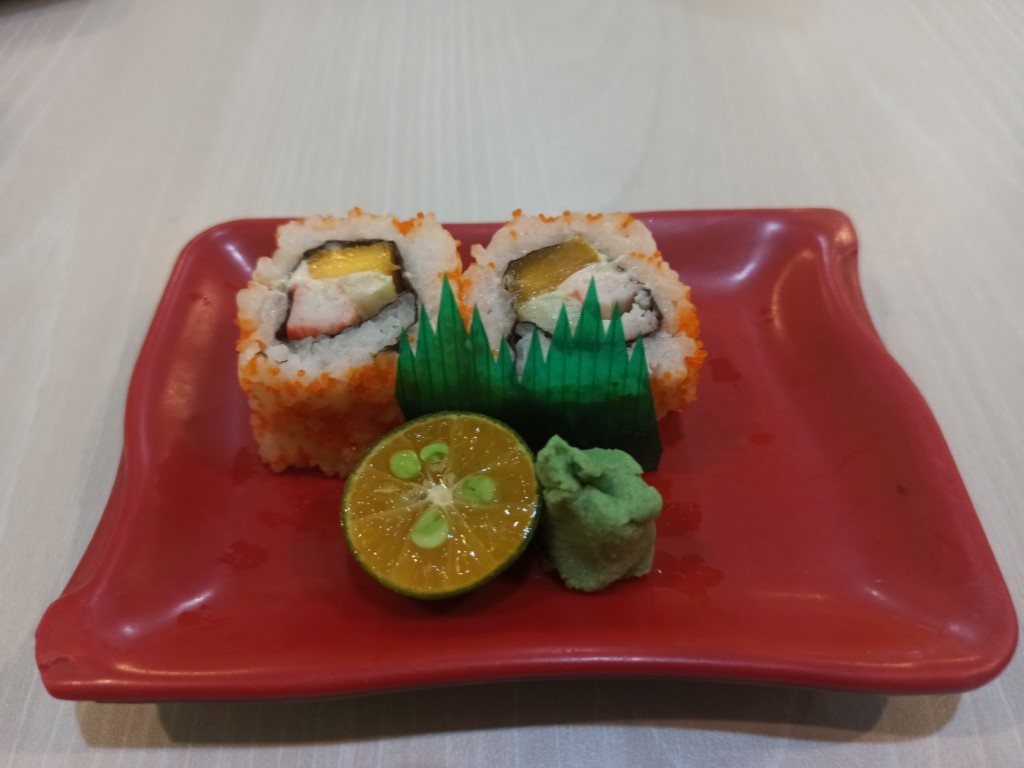
Last but not least, Sushi Yum offers add-ons to your meal for little money. And although the choice is maybe not very wide, these add-ons are worth taking. You can choose between a miso soup, red iced tea or you can select two pieces of maki of the day. What is nice, is the fact that no matter whether you order a regular meal, a starter or an add-on, the food you get is always garnished with the same neatness and with the same care.
Even our favorite set of maki of the day was always nicely served and you could not say that it was just an add-on and not a regular dish! That is something, that is really worth mentioning.
This set of maki of the day in the Sushi Yum restaurant mainly included California rolls with crabsticks, mango and cucumber. Apart from that, it was rolled not in white or black sesame seeds but in Tobiko - a small, orange-colored roe. Of course, this add-on was served garnished with and artificial grass, some wasabi paste and with this unique Calamondin. Delicious!
Now it is your turn to try it and rate it by yourself!
Date: 2024-01-23
Author: Beti – A passionate traveler and lover of Asian cuisine, especially Thai and Japanese dishes, Bernadeta brings her culinary and cultural experiences to life in her writing. Beyond her travels, she’s an avid technology enthusiast with a deep interest in data processing, merging her love for exploration with analytical insights.
Photographer: Adalbert – An aficionado of computers and photography, Adalbert captures the essence of diverse cuisines with a discerning eye. A connoisseur of rich flavors and particularly fond of meat-based dishes, he combines his technical skills with his passion for the culinary arts in every shot.









